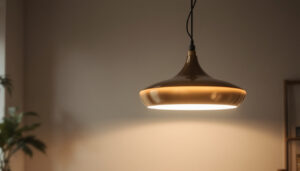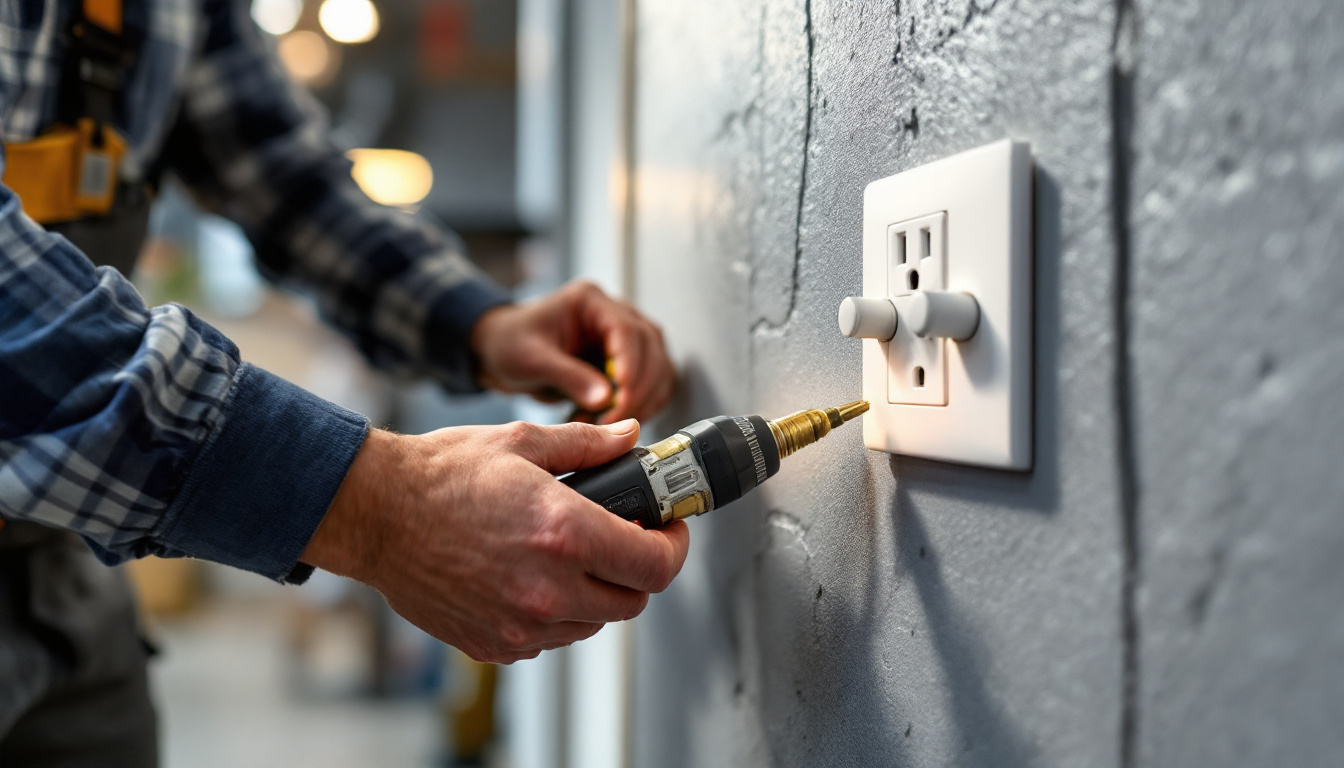

In the world of lighting design and installation, ceiling fans often play a crucial yet overlooked role. For lighting contractors, understanding the integration of ceiling fans into commercial spaces can enhance both functionality and aesthetic appeal. This article aims to demystify the essential aspects of ceiling fans for shops, providing valuable insights that lighting contractors should consider when planning and executing their projects.
Ceiling fans are not merely decorative elements; they serve several practical purposes in commercial environments. By promoting air circulation, they can significantly improve the comfort level of a space, making it more inviting for customers and employees alike. In addition, the strategic use of ceiling fans can lead to energy savings, which is a critical consideration for businesses looking to reduce operational costs.
One of the primary functions of ceiling fans is to enhance comfort through improved airflow. In a shop setting, where customers may linger for extended periods, maintaining a comfortable temperature is essential. Ceiling fans help to distribute air evenly throughout the space, preventing hot or cold spots that can deter customers from spending time in the store.
Moreover, the ability to reverse the direction of the fan blades can further optimize comfort. In warmer months, fans can create a cooling breeze, while in colder months, reversing the blades can help circulate warm air that rises to the ceiling. This versatility makes ceiling fans an invaluable asset in any commercial environment. The aesthetic appeal of ceiling fans also plays a role in enhancing the overall ambiance of a space. With a variety of styles, colors, and designs available, businesses can select fans that complement their interior decor, creating a cohesive and inviting atmosphere that encourages customer engagement.
Energy efficiency is a significant concern for many businesses today. Ceiling fans can contribute to reducing energy consumption, particularly when used in conjunction with heating and cooling systems. By allowing the thermostat to be set a few degrees higher in summer or lower in winter, ceiling fans can help maintain a comfortable environment without over-relying on HVAC systems.
Additionally, the installation of energy-efficient ceiling fans can lead to long-term cost savings. Many modern fans come equipped with energy-efficient motors and LED lighting options, further enhancing their sustainability profile. Lighting contractors should consider these features when recommending ceiling fans to their clients. Furthermore, businesses can benefit from potential tax incentives or rebates for implementing energy-saving technologies, making the initial investment in ceiling fans even more appealing. As companies increasingly prioritize sustainability, the use of ceiling fans aligns with broader environmental goals, demonstrating a commitment to reducing their carbon footprint while also appealing to eco-conscious consumers.
Selecting the appropriate ceiling fan for a commercial space involves several considerations. Factors such as size, style, and functionality must all be taken into account to ensure that the chosen fan meets both aesthetic and practical needs.
The size of the ceiling fan is critical to its effectiveness. A fan that is too small will struggle to circulate air adequately, while one that is too large may overwhelm the space. To determine the ideal fan size, contractors should consider the square footage of the shop and the height of the ceiling. A general guideline is to choose a fan with a blade span of 36 to 42 inches for small rooms, 44 to 50 inches for medium spaces, and 52 inches or more for larger areas.
Additionally, the height at which the fan is installed is crucial. Ideally, the fan blades should be positioned 8 to 9 feet above the floor for optimal airflow. If the ceiling is particularly high, downrods can be used to lower the fan to the appropriate height. It’s also important to consider the airflow capacity, measured in cubic feet per minute (CFM). Fans with higher CFM ratings will move more air, making them suitable for larger or more crowded spaces where airflow is essential for comfort.
In a commercial setting, the ceiling fan should complement the overall design aesthetic of the shop. There are various styles available, from sleek and modern to traditional and rustic. Lighting contractors should work closely with their clients to select a fan that aligns with the shop’s branding and decor.
Furthermore, color and finish play a significant role in the visual appeal of the fan. Neutral tones often work well in commercial spaces, but bold colors can be used as statement pieces in specific contexts. The choice of materials, such as wood, metal, or plastic, can also impact the fan’s durability and maintenance requirements. Beyond aesthetics, energy efficiency is another vital consideration. Many modern ceiling fans come equipped with energy-efficient motors and LED lighting, which can significantly reduce electricity costs over time. This not only benefits the shop’s bottom line but also aligns with eco-friendly practices that are increasingly important to consumers today.
proper installation is key to ensuring that ceiling fans operate efficiently and safely. Lighting contractors must adhere to best practices to avoid common pitfalls that can lead to performance issues or safety hazards.
Before installation, it is essential to assess the electrical requirements of the ceiling fan. Most fans require a dedicated circuit to ensure that they operate safely without overloading existing wiring. Contractors should verify that the electrical box is rated for ceiling fan support, as many standard boxes may not be adequate.
Additionally, contractors should follow local codes and regulations regarding electrical installations. This includes ensuring that all wiring is properly grounded and that connections are secure to prevent any potential hazards.
The method of mounting the ceiling fan can significantly affect its performance. There are three primary mounting options: flush mount, downrod mount, and angled mount. Flush mounts are ideal for low ceilings, while downrod mounts are suitable for higher ceilings. Angled mounts are necessary for sloped ceilings to ensure that the fan operates efficiently.
Contractors should also ensure that the fan is level during installation, as an improperly mounted fan can lead to wobbling or noise issues. Using a level during installation can help achieve the desired alignment.
To ensure the longevity and optimal performance of ceiling fans, regular maintenance is essential. Lighting contractors should educate their clients on proper care and troubleshooting techniques to keep fans running smoothly.
Regular maintenance tasks include cleaning the fan blades to remove dust and debris, which can hinder performance and create noise. It is recommended to use a soft cloth or a duster to wipe the blades gently. Additionally, checking the fan’s mounting hardware periodically for tightness can prevent wobbling and noise.
Contractors should also advise clients to lubricate the fan motor as needed, based on the manufacturer’s recommendations. This can help reduce wear and tear on the motor, extending the fan’s lifespan.
Even with proper maintenance, issues may arise. Common problems include the fan not working, making noise, or wobbling. If a fan does not operate, the first step is to check the power supply and ensure that the circuit breaker has not tripped.
For noise issues, contractors should inspect the fan blades for any obstructions and ensure that all screws and mounting hardware are secure. Wobbling can often be resolved by balancing the blades, which may involve adjusting the blade pitch or adding weights to the blades if necessary.
Ceiling fans can be seamlessly integrated into a shop’s lighting design, enhancing both functionality and ambiance. Lighting contractors should consider the interplay between fans and lighting fixtures to create a cohesive look.
Many modern ceiling fans come equipped with integrated lighting options, allowing for a streamlined design that eliminates the need for additional fixtures. LED lights are particularly popular due to their energy efficiency and long lifespan. When selecting a fan with integrated lighting, contractors should consider the brightness and color temperature to ensure that it meets the needs of the space.
In cases where separate lighting fixtures are used, it is essential to coordinate the style and finish with the ceiling fan. For example, a rustic fan can be paired with vintage-style pendant lights to create a cohesive look that enhances the shop’s overall aesthetic.
The combination of ceiling fans and lighting can significantly influence the ambiance of a shop. For instance, dimmable lighting paired with a ceiling fan can create a relaxed atmosphere, ideal for boutiques or cafes. Conversely, brighter lighting combined with a fan can energize the space, making it suitable for retail environments where customers are encouraged to browse and explore.
Lighting contractors should work with their clients to determine the desired ambiance and select appropriate combinations of fans and lighting fixtures to achieve the desired effect.
Ceiling fans are an essential component of a well-rounded lighting and design strategy for commercial spaces. By understanding their importance, selecting the right models, ensuring proper installation, and maintaining them effectively, lighting contractors can enhance the comfort, energy efficiency, and aesthetic appeal of shops.
As the demand for sustainable and efficient design solutions continues to grow, incorporating ceiling fans into commercial projects will not only meet client needs but also contribute to a more enjoyable shopping experience for customers. With the right knowledge and approach, lighting contractors can leverage ceiling fans as a powerful tool in their design arsenal.
Ready to elevate your lighting projects with high-quality ceiling fans that promise performance and style? Look no further than LumenWholesale, where we offer an extensive selection of spec-grade lighting products at unbeatable wholesale prices. Say goodbye to inflated markups and hello to superior lighting solutions that fit your budget. With free shipping on bulk orders, you can stock up on the best ceiling fans for your commercial spaces without any hidden fees. Don’t compromise on quality or value; choose LumenWholesale for a seamless purchasing experience. Wholesale Lighting at the Best Value is just a click away!

Discover the frequent pitfalls lighting contractors encounter with fluorescent bulb sizes.

Discover essential insights and expert tips in “Lightbulb: Everything Lighting Contractors Should Know.” This comprehensive guide covers the latest trends, technologies, and best practices to illuminate your projects and boost your business success..

Discover the transformative power of LED solar lighting for outdoor projects.

Discover innovative cost-saving strategies for lighting contractors using twist lock receptacles.
Get notified when NEW deals are released.
Optimize your budget with wholesale discounts.
Only top-quality, specification-grade lighting products.
No additional costs at checkout - what you see is what you pay.
We understand the unique needs of contractors.